Somewhere between the treadmill and the dumbbells, the unused gym memberships, and the fad exercise programs, many of us have lost what we should cherish: an attitude toward health and fitness that’s rooted in the concept of schoolyard recess. Remember when exercise was easy? Back then, you experienced the joy of playing a game, gathering friends together at the park or court, laughing whether you won or lost, and losing track of time.
But as we grow older, something happens. “Many of us have adopted a mandatory-labor approach to exercise,” says Doug Newburg, a performance consultant at the University of Virginia Medical School, in Charlottesville. “We now work out because we have to, not because we want to.”
Caring just about results, says Natalie Durand-Bush, an assistant professor of sports and health psychology at the University of Ottawa, in Ontario, Canada, eventually leads to a fitness meltdown; play is far more important than most people realize. Even the Olympic athletes Durand-Bush has researched make sure to play. “When their training grew more serious leading up to a competition,” she says, “the athletes balanced it with play. If they enjoyed something, they’d do it.”
To help you achieve a lifelong commitment to fitness, we found high-intensity workouts masquerading as games. We discovered lots of ways to make old sports fresh again. And we dug up smart fixes to boring regimens. So put away those scripted training plans and stale workouts. Want to stay in shape and love it? Then it’s time to get serious about having fun.
Increase Your Sport’s Fun Factor
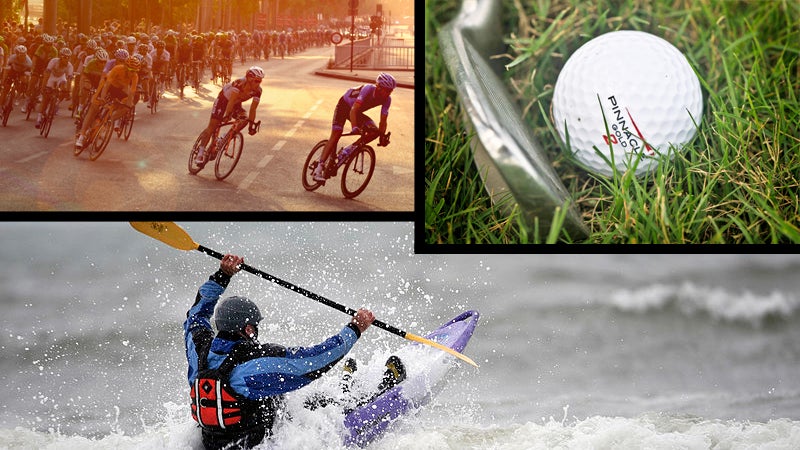
To stay with your game and maintain long-term commitment to fitness inspired by sports, you need to enjoy what you do and set attainable goals to keep yourself motivated. Below is a sport-by-sport guide to putting these elements for success into enjoyable practice. Let the games begin.
��ܲԲԾ��Բ�:��Once a week, skip the long, lonely endurance work and go play soccer, ultimate Frisbee, or basketball. Or challenge a friend to a 100-meter dash six weeks down the road. By focusing on sprint workouts leading up to the big race, you’ll increase the power of your stride, which is helpful for hoofin’ up hills.
�ҴDZ���:��Combine two sports—trekking and golf—to avoid the steep green fees at the local course. Take a few clubs and a bag of Wiffle-style golf balls to an open park and create your own course by picking out “holes” in the distance, whether they’re trees, boulders, or signposts. Swing until your ball hits the object. And fer chrissakes, be sure to yell “Fore!” with every shot.
Soccer: During practice or to warm up before a game, turn this team sport into a one-on-one competition. Set up two lines of eight cones spaced out over ten yards. Pair off and race, dribbling the ball through the cones and back, slalom style. Winners advance to the next round until the end, a bragging-rights race between the final two.
Sea Kayaking: On long, slow pulls across open water, play around with stroke speeds and power—100 strokes hard, 100 slow, ten fast, ten slow. Paddling with a fleet of friends? Hold point-to-point races every 30 minutes. Take turns picking a landmark in the distance, like a dock, inlet, or rock, and racing to it. Hold a best-of-seven series throughout the day. Loser buys dinner.
Cycling: Riding solo? Start doing calorie-based time trials. Once a week, wear a heart-rate monitor that estimates the calories you’ve burned, then pedal hard for 30 minutes. Each week, focus on burning more calories rather than tracking your time or average speed, two measurements that can vary with the weather and terrain. If you’re in a group, pick a turnaround spot with two equidistant routes to that point. Have each half of your group take a separate route. The last group to finish buys everyone’s beer. Or swap routes on the way back and race for double or nothing.
The Rules for Playing Smart

According to performance psychologist Jim Loehr, 62, managing energy—not time, miles, or reps—is the key to optimizing your fitness regimen. It makes sense. Nutrition, fitness, skills, and mental and emotional training are all driven by your energy level; if you have juice to spare, you’ll succeed. For ���ϳԹ���, Loehr, author of , distilled his knowledge into ten easy-to-remember tips.
- View Play As Essential: In the years before Spanish tennis star Sergei Bruguera won the ’93 and ’94 French Opens, he occasionally burned out on the game. As a diversion, he started playing soccer with his friends. “The new energy he brought back to tennis made him understand that soccer helped him win,” says Loehr.
- Listen to Your Body: Tune in to yourself—not ESPN or music—during workouts. “It sounds counterintuitive, but tracking your effort with a heart-rate monitor or clocking your pace is a better way to distract yourself from the pain,” says Loehr.
- Establish Patterns: Whatever you do to stay healthy, make a habit of it, whether it’s 20 push-ups before you shower or a Thursday-night basketball game. You’ll automatically make exercise a part of your life.
- Fun Doesn’t Mean Easy: You play tennis to win, you try to climb steeper hills, and you pick a peak higher than the one you scaled last year. “Playing your hardest leads to the extraordinary,” says Loehr.
- Know When to Back Off: The human body has a protective mechanism—exhaustion—that prevents it from finding the energy to go all-out all day, every day. The prescription? Rest and recovery.
- Know What Drives You: Figuring out the things that motivate you—competing against the clock, against someone else, with money on the line, or on a team—will determine how long you stick to a sport.
- Refresh Yourself: Every two hours during your day, take ten minutes for a walk, snack, or stretch. It’ll leave you with more reserves of power when you start your workout or hit the playing field.
- Log Everything: Loehr has kept a training journal for ten years. “The more exercise data you jot down,” he says, “the more you want to add to it by training more. It’s addictive.”
- Graze: Small meals eaten throughout the day help you maintain better performance. Eat foods low on the glycemic index, such as whole grains, proteins, and berries; they’ll maintain your energy level. Also, drink liquids steadily. Muscle that’s 3 percent dehydrated can lose 10 percent of its strength.
- Learn from Bad Days: A poor game, a lethargic attitude, or a nagging injury can derail a fitness program. Use these roadblocks to reexamine and reset your goals. “It’s not that you enjoy failure, but you will enjoy building a new direction out of it and putting it behind you,” Loehr says.
Set Your Brain on “Fun”
When it comes to fitness, the biggest hurdles aren’t broken bike chains or trees blocking the trail. They’re mental snags that trip up your willpower. Getting more out of your training means focusing on your energy level rather than hours logged or weight lifted. Here’s how to stay motivated.

Obstacle: “I Have no Time”
Instead of training a certain amount every day, assign yourself a weekly minute total—whether it’s 100 or 1,000. This technique encourages flexibility: If you miss a big workout, you can still do something that counts toward your overall plan. Obstacle: “I’m not that good” Set short-term goals. If you’re training for a long endurance event six months away, create benchmarks you can accomplish every two months. In the first two months, focus on stamina (set a mileage goal for a long run), then work on power (a squat weight), before putting them together in the final two months.
Obstacle: “I’m Whupped”
Play your favorite sport when you’re tired. Having fun is the best way to banish the blahs and reap physical benefits. “The answer isn’t to pick it up,” says Natalie Durand-Bush, a sports psychologist at the University of Ottawa. “The answer is to give yourself a break.”
Obstacle: “It Hurts”
Embrace the pain—so long as it’s not caused by a real injury, like a muscle pull. “Small amounts of discomfort stimulate strength and conditioning gains in shorter time,” says Chris Jordan of LGE Performance Systems, a training firm for athletes and business execs.
Obstacle: “I’m Bored”
Create your own multisport routine. Instead of going out for an hour run or ride, find a trail and run out and back for 10 to 15 minutes, then hop on your bike and go hammer for 30 minutes. Finish off the workout with 15 minutes of hill intervals. The key is to adjust your workouts so you’re not doing the same order, or same exercise, every time.
Get Social
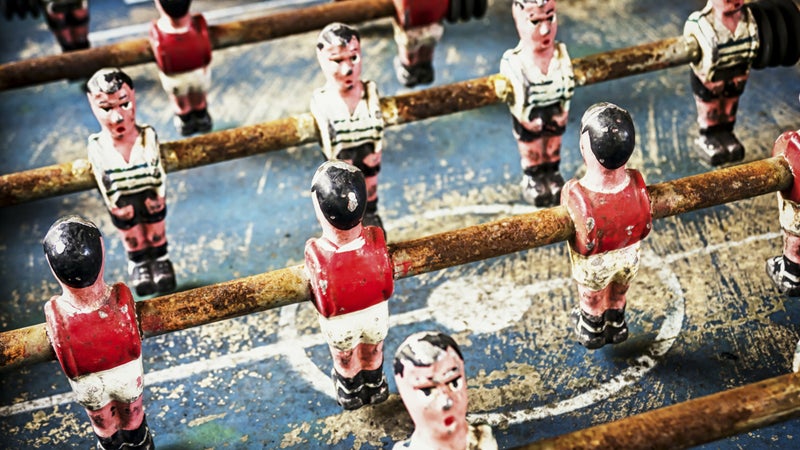
Treadmills are fine when the weather isn’t, but once the sun comes out, you need friendly competition and contests that turn exercise into a romp
Human Foosball
Two teams of up to 15 people position themselves like foosball figures across a field: five team members to a row, each team alternating rows. Players must stay fixed to their position on the field—with one foot on the ground at all times—as they kick and head a soccer ball to their goal.
�ʱ�����:��Working those oft neglected inner and outer thigh muscles, which help you move laterally and stabilize your torso. “It looks hilarious,” says Robyn Benincasa, who incorporates the game into her weekly fitness-boot-camp classes, “but it also builds communication and leadership skills.”
Gator Ball
Divide into two teams and try to throw or run a soccer ball from one end of a soccer or football field to the other. If the ball touches the ground, you can use only your feet to pick it up. And if the opposing team touches the person with the ball at any time, your squad has to turn over the ball.
�ʱ�����:��Developing your fast-twitch muscles through sprinting, cutting, throwing, catching, and kicking. “This game’s got it all,” says conditioning coach Tom Shaw, who uses it to train off-season pro football players like the Patriots’ Tom Brady. “It’s the ultimate all-body workout.”
Follow the Leader
Pair up with a partner on a field or a beach. One of you acts as the leader; the other mimics the leader’s actions—from one-legged hopping to zigzag running to walking lunges. For a harder anaerobic workout, switch leaders every 15 to 20 seconds; for aerobic conditioning, every one or two minutes.
�ʱ�����:��Building stabilizer muscles in your knees, ankles, and hips can help improve your reaction time. “This game engages your mind,” says Nancy Cummings, a research scientist at the National Training Center, in Clermont, Florida. “You have to react quickly to whatever your partner is doing.”
The Original 7-Minute Workout
Play all day and you’ll certainly end up in excellent shape. But if you want to make the jump from mere sporting enthusiast to bona fide expert, you need muscle the kind that comes from weight lifting. Well, we’ve got good news for the gymophobic among you: The world’s best integrated-strength machine just happens to be your own flesh and blood. With our full-body regimen, developed by Nancy Cummings, a certified athletic trainer and research scientist at the National Training Center, in Clermont, Florida, you’ll develop all the strength, balance, and flexibility you need to thrive. Since this workout takes less than ten minutes, you can do it every other morning before breakfast.
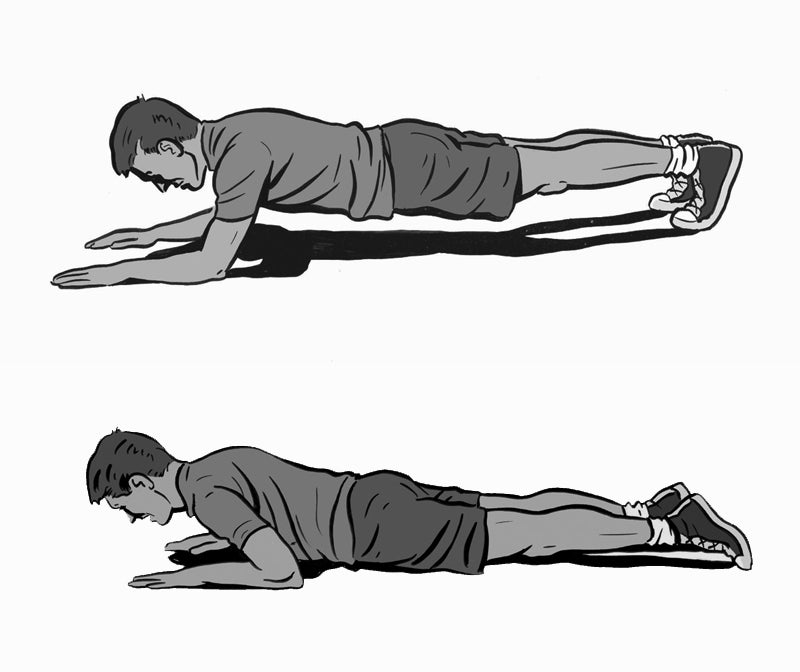
The Plank Slide

Lie facedown with your forearms and palms on the ground parallel to your body, arms close to your torso. Keeping your legs, hips, chest, and head in a straight plane, push yourself up onto your elbows and slide yourself back as far as you can, then slide your body forward as far as possible. Start with ten reps, progress to 15.
Plank-Roll Push-Up
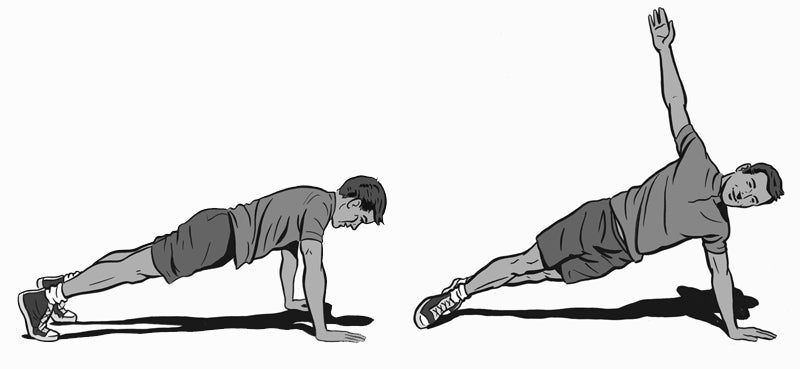
Lie facedown with hands at the sides of your chest, palms down. Keeping legs, hips, torso, and head straight, push your body up, extending your right arm upward and rolling your torso 90 degrees so that your right arm points to the sky and your chest is perpendicular to the floor. Twist back, placing your right palm on the ground, and lower until your chest barely scrapes the floor. Repeat, twisting to the left side for one rep. Start with ten reps, progress to 15.
The Pickpocket

Lie on your back with your knees bent and feet flat on the floor. Interlock your hands over your chest, elbows out, then raise your torso to a 45-degree angle. Twist to the left until your elbow touches the ground, then twist 180 degrees to the right so that your other elbow does the same. Do ten reps.
Clock Lunges
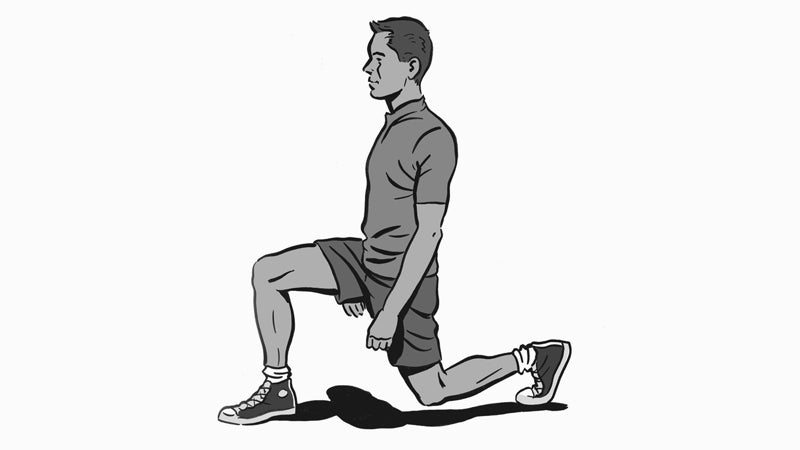
Imagine you’re standing in the center of a horizontal clock. Lunge forward with your right leg until your right thigh is parallel to the ground and pointing to 12 o’clock. Return to the start position and lunge with the same leg to three o’clock, then backwards to six o’clock. Next, with your left leg, lunge backwards to six o’clock, then nine, and, finally, forward to the 12 o’clock position. Do the circuit six times.


